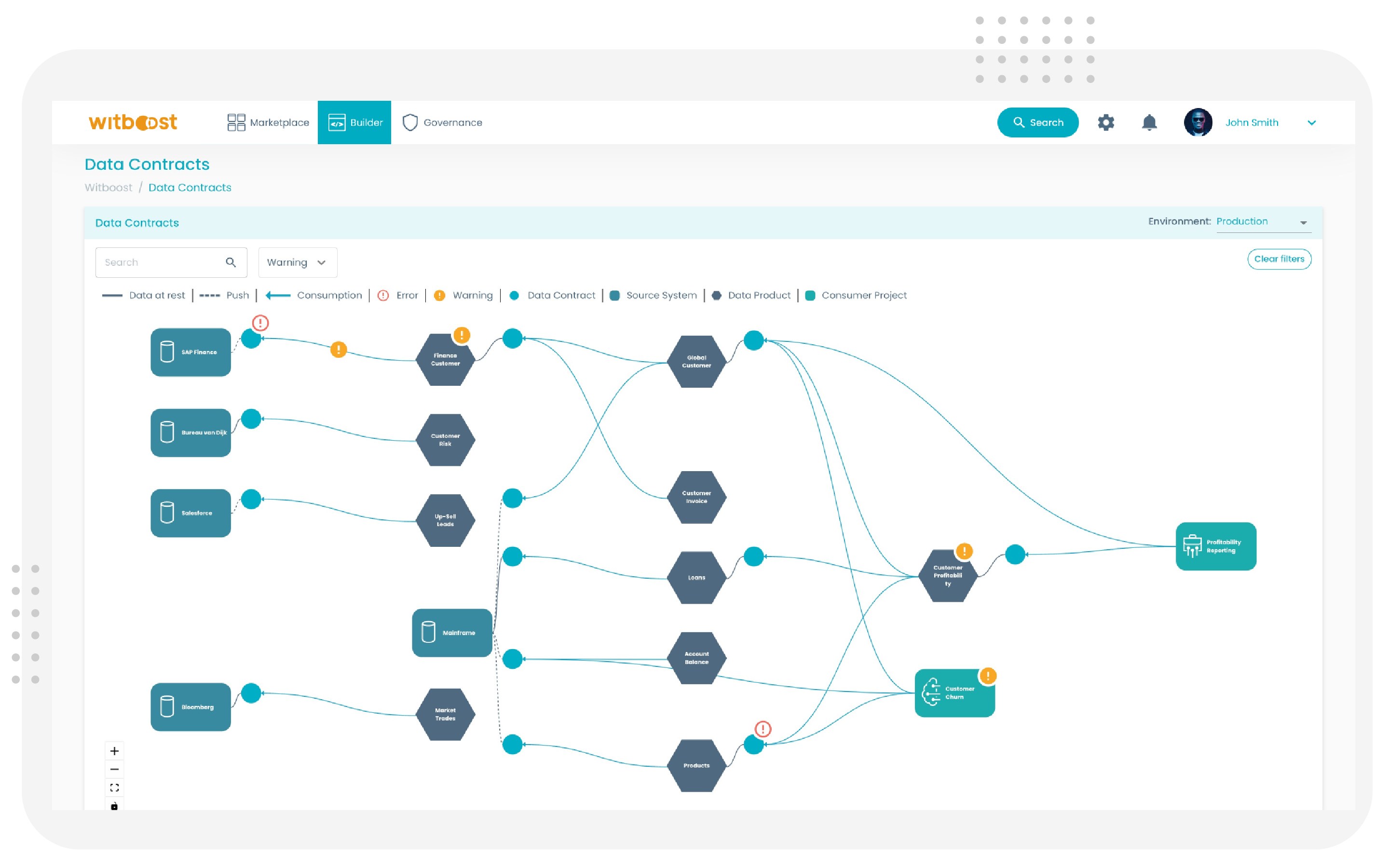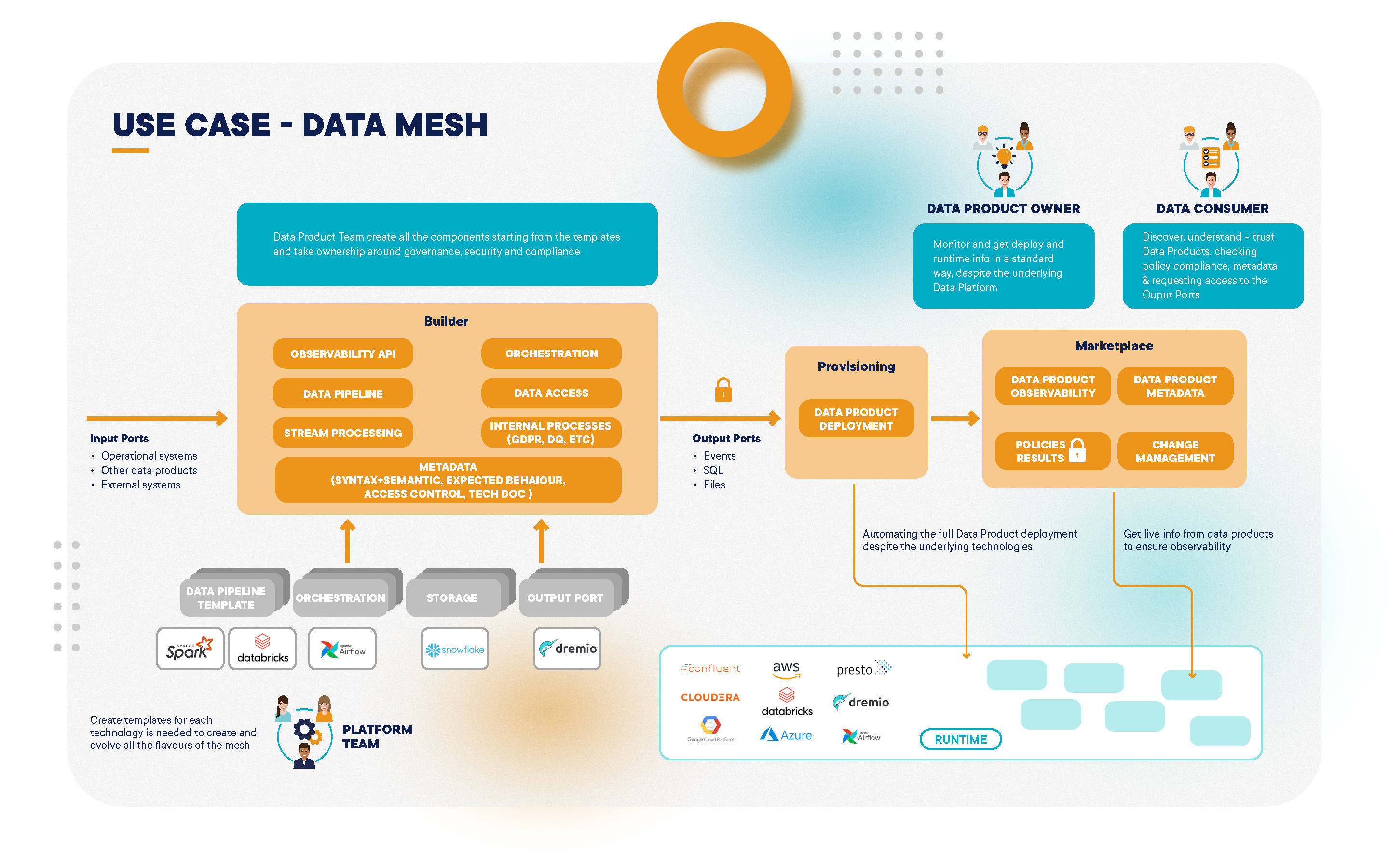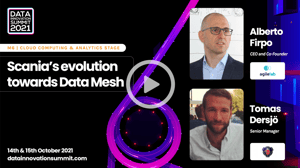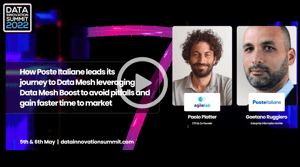Boosting Data Contracts
with Data Ownership, Trust, and Collaboration
A Data Contract is an agreement that regulates the data exchange between a Data Producer and a Data Consumer automatically enforced by a platform.
Data Contracts help you understand the complete map of your data and the flow of data ownership in your organization.
Data contracts are not just static information but are monitored and enforced in real-time by Witboost to connect them to the organization in case of trouble.

Data Contracts Lifecycle
Data Contract Creation
Data Contracts in Witboost are templates, making their adoption easy and self-service. The definition of Data Contracts is customizable. Many different patterns can be adopted and implemented to build Data Contracts.
Data Contract Enforcement
Each Data Contract, once registered in Witboost, has a guardian that is verifying the correctness of the contract at run-time. Guardrails enforce the contract descriptor
Data Contract Communication
When a Data Contract fails it is important to notify all the involved stakeholders, the owner of the contract, and all the downstream consumers.
Data Contract Capabilities
Definition
Let users define their data contracts in a pure and declarative way, but still integrated in the SDLC. Data Contract can include technical information, semantic information, Service Level Agreement, Data Quality expectations, and Data Sharing Agreement.
Automation
Automatically generate the infrastructure and the runtime to execute and enforce the Data Contracts on multiple technologies and different patterns. By integrating your Data Quality/Observability tool, it is possible to auto-generate the Data Contract guardian.
Monitoring
Reconstruct the full map of Data Contracts in your organization, providing visibility on their execution correctness. Witboost detects breaking contracts and pro-actively informs the involved stakeholders for faster data issue resolution.
Data Mesh Success Cases
Learn more about how these data-driven companies have used Witboost to steer their Data mesh Journey.
Witboost: Data Mesh Enabler
Domain oriented Ownership
A unified workspace for each domain with full autonomy in delivering value, while leveraging the platform's capabilities end-to-end.
Self-Service data infrastructure as a Platform
Profoundly automate your Mesh with Templates. Each has full provisioning automation along the entire data product lifecycle.
Federated Computational Governance
Enforce your governance with computational policies along the delivery process. All handled by the platform team.
Data as a Product
Standardize Data as a Product thinking with Templates and boost interoperability across data silos, ultimately breaking them down.

Witboost is the ideal platform upon which to build a Data Mesh solution for companies of any size. When Vishnu Chintamaneni, director of Engineering and Anjali Gugle, Product Security and Data Strategy Manager at Cisco (one of the largest technology companies in the world, ranking 74 on the Fortune 100 list) envisioned “Stellaris” - a new data and API platform based on the Data Mesh architecture, the choice was obvious: build it on the Witboost platform.
The project aims at solving the scalability problem of their current architecture, due to highly coupled pipeline decomposition, hyper-specialized ownership, and loss of context. All this leads to ineffective data management and weak governance, stifling productivity and innovation. The solution is a Data Mesh architecture built on Witboost.
This will allow Cisco to become more data-driven, democratize data, making it available securely for proper use, increase data literacy and data quality, enable visibility, clarify ownership, and provide transparency. In other words, the goal is to solve the issues presented by centralized, monolithic data lakes by treating domain-based data as the end-product. This will empower separate business domains to host and serve their datasets in an easily consumable way and also enable analytics that truly reap the benefits of its data.


